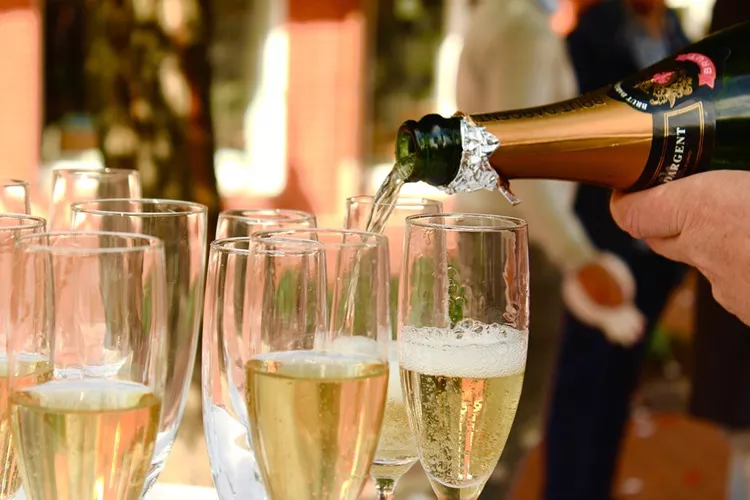Old habits die hard, and some of them won’t do us any good when it comes to enjoying Champagne. Next time you buy a bottle of celebratory Champagne, make sure you get the best value for your money by avoiding these common mistakes pointed out by wine experts.
Too Cold
“I don’t like to put Champagne straight into an ice bucket,” says Kathryn Koch, wine director at Esters Wine Shop & Bar, which the Los Angeles Times named the best bar in Southern California. “My favorite thing is to open the Champagne while it’s still cold and put it on the table. I like to see what happens as the Champagne naturally warms to cellar temperature, which is about 55 degrees Fahrenheit,” she says. “All the imperfections and nuances come out.” She likes to open the Champagne when it’s about 45 degrees Fahrenheit, then return it to the fridge once it starts to warm above 55 degrees.
Matteo Lunelli, president and CEO of Ferrari Trento Winery, recommends storing the bottle in a cool place and then refrigerating it the night before drinking. The final temperature should be between 112 and 118 degrees. He has one warning: Leaving sparkling wine in the fridge for too long may change its flavor. “Without humidity, the cork can dry out. As the cork dries out, the seal between the bottle and cork loosens and the wine oxidizes faster, changing its aroma. It also picks up flavors and aromas from other foods,” he says.
Opening the bottle
Yes, it looks cool. But don’t get complacent. “I’ve never opened Champagne this way, and sommeliers don’t do it either,” Coker says. “Sommeliers always put their thumb on the cork until the cork is out.” She suggests holding the bottle at a 45-degree angle (being careful not to point it directly at anyone, of course) and placing a cloth napkin between your thumb and the cork. Then, gently twist the bottle, which gives you more control.
Tilting the glass
So here’s where the difference of opinion comes in. While Ferrari Trento recommends tilting the Champagne glass, as most people do, Coker actually disagrees. “Any bartender will tilt the glass at 45 degrees, like you would when pouring beer. The bubbles hit a larger surface area of the glass, which reduces the amount of foam and allows you to pour faster,” she says. “I pour it into a glass that’s sitting on the table, which is the correct way to pour.” She notes that if she’s pouring into a flute, she’ll try to hit the side of the glass, which does help more bubbles dissipate. You also don’t want to stop pouring repeatedly. “Technically, you’re only supposed to stop in the middle, which means you’re pouring slowly,” Coker says.
Overfilling the glass
Ferrari Trento recommends filling the glass to 10 centimetres, which is just under half a glass. That’s definitely not a full glass, and Coker agrees to pour less. “I try to only fill half a glass,” she says. “That way it stays cold and I can refill it more often.” The idea here is that if you’re drinking champagne slowly (like some people do, because it’s champagne), the liquid at the bottom will be warmer than the freshly chilled liquid at the top, which means you won’t get a consistent drinking experience. Better to refill more often. (Really, we can’t say no to that.)
Serve in a Champagne Flute
Perhaps the most surprising advice is that most winemakers and experts agree that flutes actually limit the flavor of Champagne. The narrower mouth of a flute can suppress aromas, limiting the tasting experience. Matteo Lunelli felt so deeply about this issue that he actually tried to import custom sparkling wine glasses from Italy—similar to white wine glasses, but with narrower mouths—for the 2017 Emmy Awards, where Ferrari Trento was served. (The Television Academy disagreed.)
“I prefer to drink Ferrari and all high-end sparkling wines in large tulip flutes or large wine glasses, especially when you’re tasting an older or reserve Trento doc, or pairing it with food,” Lunelli says. While he thinks flutes emphasize the bubbles or effervescence of a sparkling wine, they also increase the perception of acidity. Using a larger glass, he asserts, “immediately improves the tasting experience, and you start to see the sparkling wine in front of you as a wine, not just a celebratory glass.”
Coker agrees. “When you drink Champagne this way, you can really appreciate it as a wine, not just a pleasant beverage,” she says. “Usually when I taste a wine, I smell it, swirl it, smell it. You can’t do that when you’re drinking it in a flute. There’s very little surface area exposed to oxygen. There are fewer esters that can be released.” She points out that in France, sparkling wines are often served in white wine glasses. “Flutes are more of an American thing.”
The same is true in Italy, says Cristina Mariani-May, president and CEO of Banffy Winery. “There, you almost always see people enjoying prosecco and sparkling wine in white wine glasses,” she says. “Like still wines, the more a sparkling wine breathes, the more expressive it is, both in terms of aroma and taste, because what you smell is what you taste.”
You Might Be Interested In:


